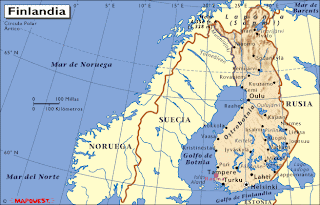 One of the biggest problems I had when visiting Finland was the language. Finish is a language of Finno-Ugric origin. The only other languages which are slightly similar are Hungarian, the Samoyedic languages, and the Permic languages, spoken in small groups of Siberia and South of Russia. That is, they are of very little help to us. Spanish and English speakers won't find a word that sounds familiar to us.
One of the biggest problems I had when visiting Finland was the language. Finish is a language of Finno-Ugric origin. The only other languages which are slightly similar are Hungarian, the Samoyedic languages, and the Permic languages, spoken in small groups of Siberia and South of Russia. That is, they are of very little help to us. Spanish and English speakers won't find a word that sounds familiar to us. So, as you can imagine, my visit to the Rauma Museum wasn't as satisfactory as I had expected. Precisely because I couldn't understand what was written on the signs. An English translation was only on some of them.
Having this difficulty made me write a list of lace related words, which I want to share with you, just in case you need it some time.
FINNISH | SPANISH | ENGLISH |
jamikka | trenza | plait |
kiaru | vuelta | twist |
kokolyönti | punto enteroVCVC | whole stitch |
laanalanka | hilo de contorno o reseguido | gimp thread |
lenkki | baguilla | picot |
liinalyönti | punto zurcido CVC | cloth st |
mandeli | hoja de guipur | leaf |
mynseri | picado | pricking |
nypläystyyny | almohadilla | pillow |
nypylä | bolillo | bobbin |
pitsi | encaje | lace |
puolilyönti | medio punto VC | half stitch |
sinivuokko | hepática (planta que inspira muchos de los diseños de E.L. Kortelahti) | hepatica (plant that inspires many of E.L. Kortelahti's designs) |
spindeli | araña | spider |
 |
| Hepatica nobilis |





